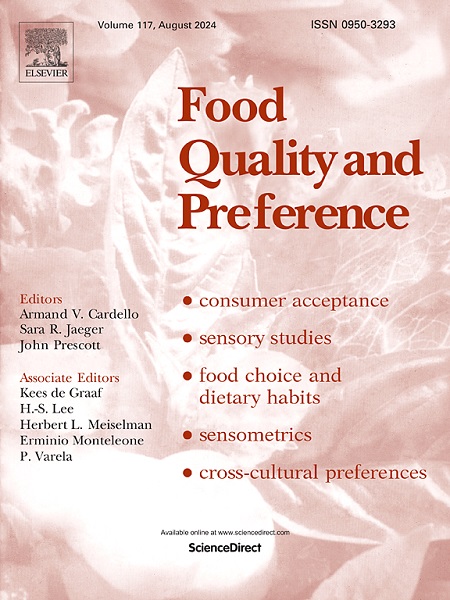The curvilinear relationship between perceived stress and spicy food craving in Young females: A non-linear mediation effect of positive emotional experience of spicy food consumption
IF 4.9
1区 农林科学
Q1 FOOD SCIENCE & TECHNOLOGY
引用次数: 0
Abstract
Stress has substantial impact on eating behaviors. Recent data have shown that nearly as many people picked spicy food as sweet food to counteract their perceived stress. Given the well-documented physiological and psychological benefits of spicy food consumption, understanding its relationship with perceived stress could provide valuable insights for developing effective stress-management strategies. The current study examined the relationship between perceived stress and spicy food craving among 196 young female participants using the Perceived Stress Scale, Spicy Food Craving Questionnaire, and Spicy Food Emotional Experience Questionnaire. Lind and Mehlum's three-step procedure was used to test the U-shaped relationship, and Hayes and Preacher's method was employed to examine the nonlinear mediation pathway. Results revealed a significant U-shaped relationship between perceived stress and spicy food craving, mediated by positive emotional experiences associated with spicy food consumption. Specifically, both no to very low and high to extreme levels of perceived stress correlated with heightened positive emotional experiences when consuming spicy foods, leading to increased cravings. These findings suggest that varying levels of perceived stress may differentially influence individuals' emotional responses to spicy food consumption, which in turn affects their spicy food cravings. The identified mediation pathway illuminates the complex interaction between stress, appetite, and emotional experience of eating. To the best of our knowledge, this is the first study to investigate the relationship between perceived stress and spicy food craving, providing new insights into the potential therapeutic applications of spicy foods or capsaicin in stress management.
求助全文
约1分钟内获得全文
求助全文
来源期刊

Food Quality and Preference
工程技术-食品科技
CiteScore
10.40
自引率
15.10%
发文量
263
审稿时长
38 days
期刊介绍:
Food Quality and Preference is a journal devoted to sensory, consumer and behavioural research in food and non-food products. It publishes original research, critical reviews, and short communications in sensory and consumer science, and sensometrics. In addition, the journal publishes special invited issues on important timely topics and from relevant conferences. These are aimed at bridging the gap between research and application, bringing together authors and readers in consumer and market research, sensory science, sensometrics and sensory evaluation, nutrition and food choice, as well as food research, product development and sensory quality assurance. Submissions to Food Quality and Preference are limited to papers that include some form of human measurement; papers that are limited to physical/chemical measures or the routine application of sensory, consumer or econometric analysis will not be considered unless they specifically make a novel scientific contribution in line with the journal''s coverage as outlined below.
 求助内容:
求助内容: 应助结果提醒方式:
应助结果提醒方式:


